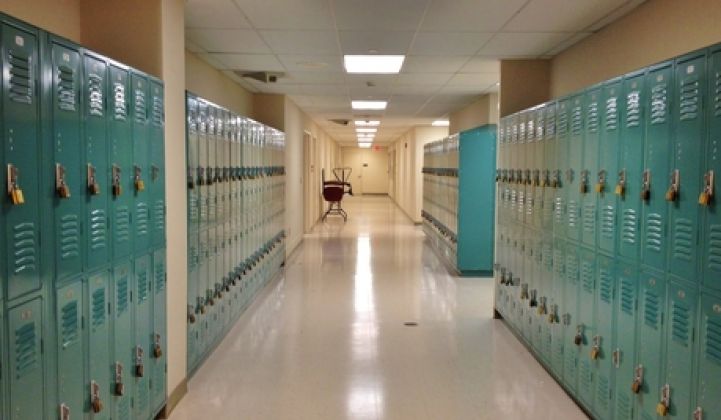With school in full swing, this seems like an appropriate time to offer some lessons in energy efficiency.
Having conducted audits of hundreds of schools nationwide, the FirstFuel team has picked up on several energy-use trends that point to unnecessary consumption at educational institutions across the country. Here's our list of the top three energy problems we've spotted.
1. Building automation scheduling
Many schools run HVAC systems continuously each day, operating as if occupancy levels are stagnant from morning to night, and worse, through the weekend. However, because schools close earlier than typical buildings -- and because they are only in session Monday through Friday -- there is a huge energy savings opportunity in modifying building automation schedules to mimic occupancy schedules.
Typical schools should have HVAC equipment start between 5:30 a.m. and 6:30 a.m., and shut down between 3:30 p.m. and 5:30 p.m. Building operators should also prepare for school vacations and holidays, when the structures are unoccupied for days on end.
2. Refrigeration controls
When we think schools, we typically picture classrooms. However, schools house all sorts of rooms where energy consumption runs high, and in no place is this more true than the cafeteria kitchen.
In virtually all kitchen freezers, air is cooled by forced circulation evaporators that contain propeller fans powered by fractional-horsepower motors. Typically, these fans run continuously, as do electric resistance door heaters preventing frosting in each walk-in chiller or freezer.
By installing electronically commutated (EC) motors on evaporator fans and refrigeration controllers on walk-in coolers/freezers, schools can significantly reduce the energy associated with refrigeration. Controllers will start/stop the evaporator fans when operation is unnecessary, and the EC motors are 30 percent more efficient than standard two-pole motors. As a result, schools can realize energy savings by reducing the run time of the compressors and evaporator fans, as well as the reduction in power load of the new fans.
In addition, by installing controllers on the freezers, schools can optimize the operation of the electric defrosters and door heaters. Controller units sense when the refrigerant has ceased flowing through the evaporator coil and controls the fan motors, and they are capable of reducing door and frame heater run time by 95 percent in chillers and 60 percent in freezers. The controllers will also reduce compressor and evaporator run time by up to 10 percent.
3. Vending machine controllers
There’s been a lot of controversy around whether vending machines should be present on school property. While most vending-machine critics argue that the machines should be removed for health-related reasons, what’s discussed far less is that the machines are major energy efficiency offenders.
While eliminating vending machines from school property would be most beneficial in reducing energy spend, schools that want to keep handy snacks on-site can install VendingMiser controllers. These controls power down vending machine lights and refrigeration whenever there’s no foot traffic in front of the machine for a period of time. This is done through the use of a motion sensor. The controls also power up the refrigeration system periodically to maintain product temperature and to sense machine operation so that it’s only powered down when the compressor is not operating to prevent adverse impacts on compressor life.
Through both operational changes (like more appropriate HVAC system scheduling) and retrofits, such as the installation of EC motors or VendingMiser controllers, schools can quickly and easily improve their energy efficiency. As a result of these changes, schools will see huge utility savings and can better spend their budget on things like school supplies, improved technology, and teaching staff.
***
Swapnil Shah is co-founder and CEO of FirstFuel, a building efficiency analytics firm.



